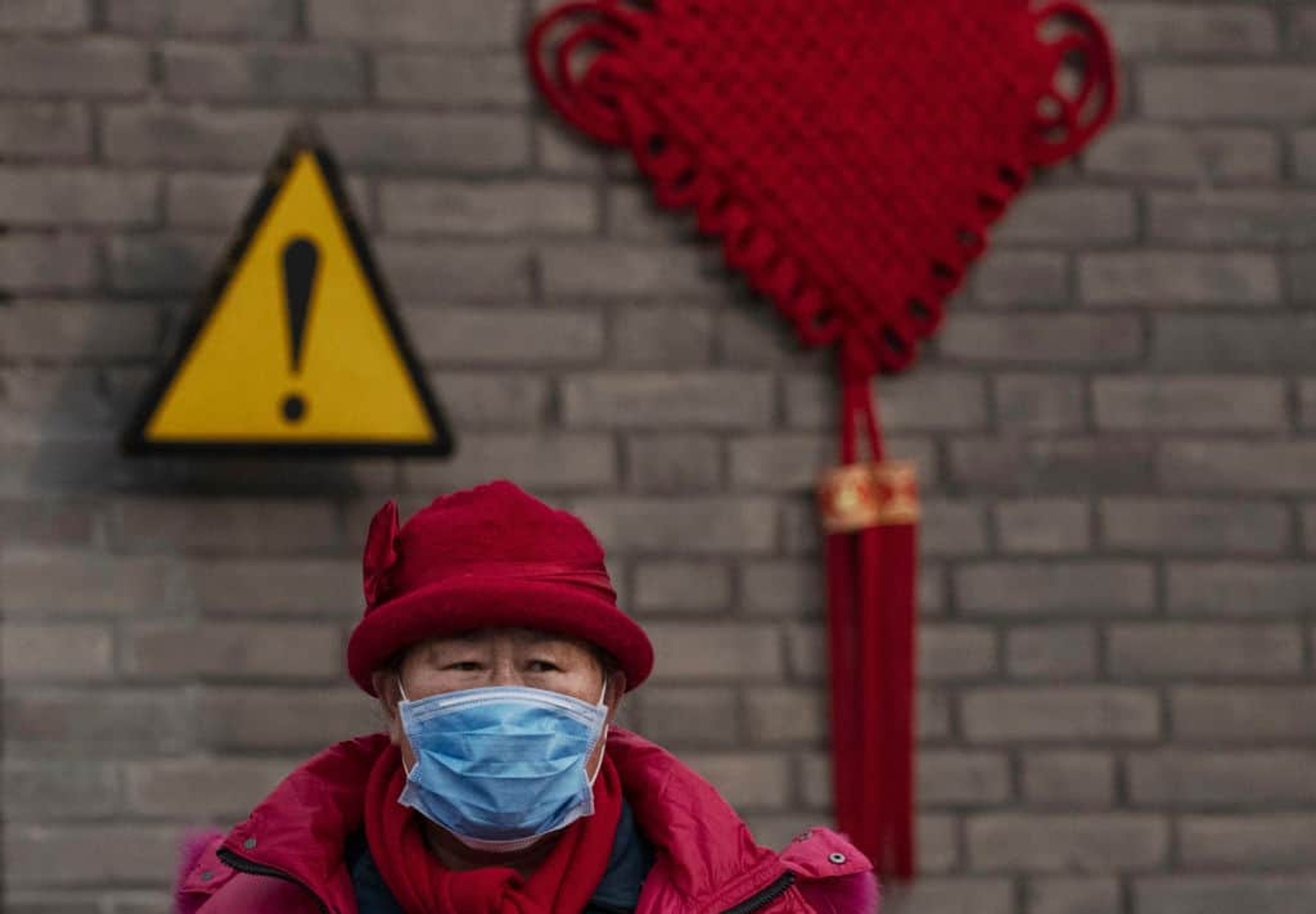Preventing the Coronavirus from Becoming Another SARS
Jennifer Huang Bouey is an epidemiologist and senior policy researcher and Tang Chair in China policy studies at the nonprofit, nonpartisan RAND Corporation.

A visitor wears a protective mask as she tours the grounds of the Temple of Heaven in Beijing, China on Jan. 27. (Kevin Frayer/Getty Images)
Many people are wondering if the coronavirus epidemic that recently erupted in China, with more than 4,500 infected and over a hundred killed so far, could be another SARS. A SARS outbreak in China in 2002 infected more than 8,000 people and killed 774. The pandemic eventually spread to more than 30 countries and caused between $30 and $100 billion in economic damage globally, and an estimated drop of 1 percent GDP in China.
There are many similarities between the coronavirus and the SARS virus. The coronavirus shares at least 70 percent of genetic material and similar transmission routes with SARS, and it causes similar clinical symptoms. Both can be spread between animals and humans. Like the SARS pandemic, reporting of the initial cases of coronavirus was flawed. Before cases were identified outside mainland China, Chinese health officials prematurely asserted that there was no human-to-human transmission and suppressed case reports for days.
This error was a notable disappointment because the Chinese government comprehensively restructured its public health system in response to SARS. A real-time web-based reporting system for emerging public health events was set up in 2004; the China National Influenza Center extended its surveillance network to every province in China and became a World Health Organization collaborating center for influenza in 2010. As of November 2017, China’s Center for Disease Control consisted of thousands of units and almost a million public health professionals serving at all levels of government.
Nevertheless, the initial mishandling of coronavirus case reporting revealed weaknesses in this enhanced system. Chinese government officials’ political careers are evaluated largely on economic performance. Such a system may make officials reluctant to disclose a potential epidemic for fear of its economic impact, especially before the Chinese New Year when tourism and retail are strong economic drivers. Also, despite the establishment of a national pandemic surveillance and response framework, the maintenance of the day-to-day system still relies on local staff supported by local government funding. A recent China CDC report indicated that staff levels have been declining, recruiting and retention of high-quality professionals has been difficult and high-level Chinese government commitment to pandemic preparedness has been weakened by competing health priorities.
“The unfolding battle against this epidemic highlights the importance of prioritizing global health research and open collaboration among scientists around the world.”
Despite these similarities, the trajectory of the coronavirus might still be very different than that of SARS. First, SARS had a case-fatality rate of around 10 percent. The coronavirus so far has a fatality rate of around 3 percent, which may change as the virus continues to mutate and more cases are discovered.
Second, there is unprecedented global health scientific research collaboration with this outbreak. Earlier this month, within days of the initial reports of the outbreak, scientists in China shared the virus’s genomic sequencing data. In comparison, it took five months after the first cases were reported to sequence the SARS genome.
And lastly, China’s national response system has now been triggered, and Chinese high-level officials expressed a strong political commitment to contain the epidemic. In the last few days, provincial case reporting is catching up, Hubei province received 1 billion RMB (around $150 million) from the ministry of finance to support epidemic control and the Chinese government is implementing unprecedented quarantine actions to shut down travel and crowds. The U.S. and many countries in Asia have airport screening and case tracing in place as well.
The coronavirus is the most serious test of the Chinese government’s strengthened epidemic surveillance and response system since new measures were established after the SARS outbreak. The unfolding battle against this epidemic highlights the importance of prioritizing global health research and open collaboration among scientists around the world.